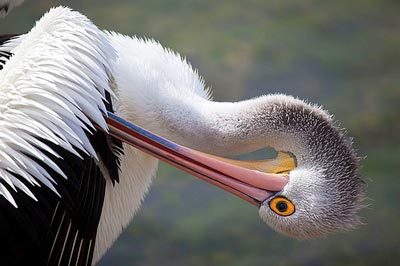
It was only a few decades ago that incision and suction were recommended snakebite first aid. However, concerns arose about injuries and infections caused when laypersons made incisions across fang marks and applied mouth suction. Meanwhile, several snakebite suction devices (eg, Cutter’s Snakebite Kit, Venom Ex) were evaluated, and it was determined that they were neither safe nor effective. So, recommendations changed, and mechanical suction without incision was advocated instead. It seemed intuitive that suction alone would probably remove venom and should not cause harm. However, when the techniques were studied rigorously, quite the opposite was discovered.
One of the most popular suction devices, the Sawyer Extractor pump (Sawyer Products, Safety Harbor, FL), operates by applying approximately 1 atm of negative pressure directly over a fang puncture wound (or wounds) without making incisions. […] Although each of these 3 studies was done independently of each other and using different methodology, they arrive at the same conclusion: the Extractor does not work, and it could make things worse.
{ Annals of Emergency Medecine | PDF }
health, poison, reptiles | May 7th, 2014 10:40 am

That’s patient X, the former US marine who suffered a bite from his pet rattlesnake. Patient X, the man who immediately after the bite insisted that a neighbour attach car spark plug wires to his lip, and that the neighbour rev up the car engine to 3000 rpm, repeatedly, for about five minutes. Patient X, the bloated, blackened, corpse-like individual who subsequently was helicoptered to a hospital, where Dr Richard C Dart and Dr Richard A Gustafson saved his life and took photographs of him. […]
Though rattlesnake bites can be deadly, there is a standard, reliable treatment – injection with a substance called “antivenin”. Patient X preferred an alternative treatment. The medical report explains: “Based on their understanding of an article in an outdoorsman’s magazine, the patient and his neighbour had previously established a plan to use electric shock treatment if either was envenomated.”
{ Guardian | Continue reading }
photo { Jason Nocito }
health, reptiles, weirdos | September 12th, 2012 10:38 am

A cold-blooded serial killer is on the loose. His name is Gustave. (…)
Gustave is reputed to have devoured hundreds of villagers, snatching them from the banks of the Rusizi and the northeastern shores of Lake Tanganyika. Faye estimates that the massive crocodile measures 20 feet long, weighs one ton (2,200 pounds), and is 60 years old (wild crocs, on average, live to age 45). Trained herpetologists agree that Gustave could be that large and that he is certainly one of the most infamous man-eaters of all time.
{ National Geographic | Continue reading | Wikipedia }
related { Herpetology is the branch of zoology concerned with the study of amphibians (frogs, toads, salamanders…) and reptiles (snakes, lizards, turtles, crocodilians…) | Wikipedia }
reptiles | September 16th, 2011 8:00 am
animals, asia, haha, reptiles, weirdos | May 13th, 2011 3:10 pm

A venomous Egyptian cobra went missing from New York’s Bronx Zoo, prompting the closure of the zoo’s reptile house until further notice. (…)
The Egyptian cobra is most commonly found in North Africa. Its venom is so deadly that it can kill a full-grown elephant in three hours — or a person in about 15 minutes, according to wildlife experts. The venom destroys nerve tissue and causes paralysis and death due to respiratory failure.
{ CNN | Continue reading }
new york, reptiles, uh oh | March 28th, 2011 5:00 pm

Undoubtedly you have heard that dogs can sense earthquakes before the tremors occur. While anecdotes are common, experimental evidence supporting these claims remains elusive. The USGS in the 1970′s even examined the ability of animals for prediction “but nothing concrete came out of these experiments.”
Cueing on changes in the weather is frequent among the animal kindgom. Indeed, the daily, seasonal, and annual cycles of animals are triggered to changes in temperature, day length, precipitation, among a host of other environmental cues. But predicting the weather changes including large catastrophic weather events such as cyclones and hurricanes may be of another ilk.
Being able sense an oncoming major hurricane or cyclone would prove an invaluable trait for animal. Storm surges can both decimate and rearrange marine habitats especially in coral reefs. (…)
In 2009, the typhoon Morakot passed over the Philippines, Taiwan and eventually mainland China. (…) Researchers counted sea snakes in the coastal area before (July), directly before (August 5-6, labelled during below), and after the typhoon (August 12-17th). (…)
Data suggests that snakes senses the approach of the typhoon even before it made landfall.
{ Deep-Sea News | Continue reading }
photo { Stuart Robertson Reynolds }
incidents, mystery and paranormal, reptiles, science | November 12th, 2010 12:20 pm

Nobody asked me, but the building was designed for the Astor Estate by Herman Lee Meader, a Harvard-trained architect who gave legendary parties and kept a boa in his penthouse.
{ Christopher Gray | Photo: Ray Sawhill }
Herman Lee Meader (died February 14, 1930 at 55) was an American architect and author. He designed several prominent buildings in Manhattan, both commercial and residential, as well as much work on the Astor estate, including the Waldorf building located at 8 west 33rd St., then the heart of the fashionable shopping district. Meader lived in the Waldorf Building penthouse, where he created a surrounding rooftop Italian garden. There he held elaborate parties which attracted musicians, artists, writers, prizefighters, chess players and others—at one, Meader staged a fight between a black snake and a king snake.
{ Wikipedia | Continue reading }
bonus [click to enlarge]:


{ NY Times }
architecture, flashback, new york, reptiles | October 10th, 2010 9:29 am

How spitting cobras shoot for the eyes
Bruce Young from the University of Massachusetts is antagonising a spitting cobra. He approaches, keeping outside of the snake’s strike radius, while moving his head from side to side. The cobra doesn’t like it and erects its hood in warning. Young persists, and the snake retaliates by launching twin streams of venom at him from forward-facing holes in its fangs. The aim is spot-on: right at Young’s eyes. Fortunately, he is wearing a Perspex visor that catches the spray; without it, the venom would start destroying his corneas, giving him minutes to seek medical aid before permanent blindness set in.
It may seem a bit daft to provoke a snake that can poison you from afar, but Young’s antics were all part of an attempt to show just how spitting cobras make their shots. Their venom is a potent defensive weapon, but it’s also completely useless if it lands on the skin or even in the mouth. To work, the cobra must aim for the eyes.
Just think about how hard that is. The cobra must hit a moving target that’s up to 1.5 metres away, using a squirt gun attached to their mouth. The fang is fixed with no movable nozzle for fine-tuned aiming. And the venom spray lasts just 50 milliseconds – not long enough to correct the stream after watching its arc.
By taunting cobras from behind his visor, Young discovered their secret. The snake waits for a particularly jerky movement to trigger its attack and synchronise the movements of its heads in the same way. It shakes its head rapidly from side to side to achieve a wide spray of venom. And it even predicts the position of its target 200 milliseconds later and shoots its venom at where its eyes are going to be.
{ Discover | Continue reading }
fights, reptiles, science | May 20th, 2010 8:05 am
reptiles, smoking | February 4th, 2010 9:10 am












